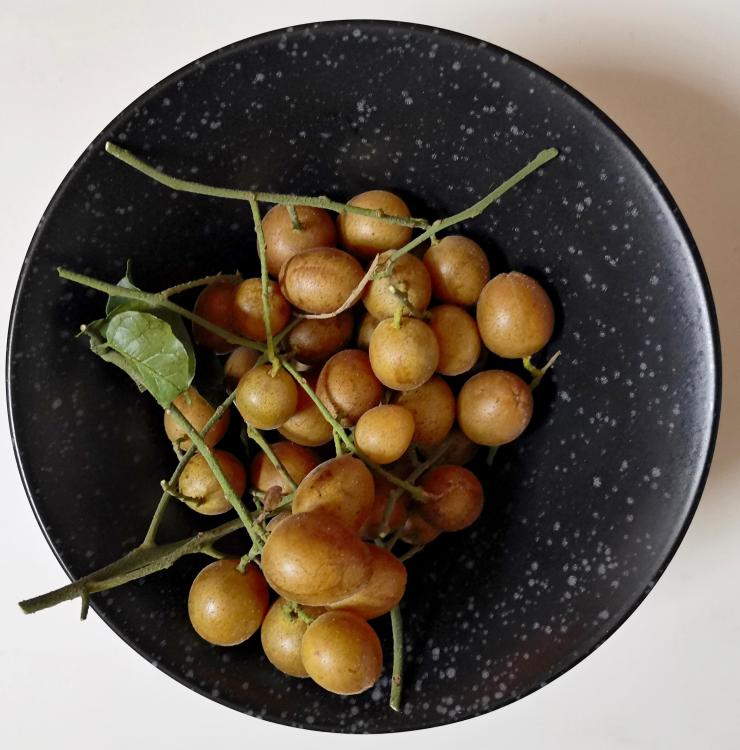Found these today.
黄皮 (huáng pí, literally 'yellow skin') Wampee, Clausena lansium. This fruit is native to SE Asia, especially southern China,Vietnam, Malaysia and Indonesia. It is very popular in Hong Kong, where it picked up its English name from the Cantonese pronunciation, wong4 pei4*2.
Wampee is the fruit of a smallish tree (no more than 20 metres tall). The fruit is about the size of a large grape and up to 50% consists of seeds. The seeds are said by some sources to be edible; others say to discard them. I tend to eat the small ones but not the larger. Wikipedia claims that the skin is edible but people in China and Vietnam seldom eat any fruit's skin.
The flavour is initially sweet, but in the aftertaste sourness predominates. They kind of remind me of slightly sweeter gooseberries.
These are often confused with the similar looking and related chicken skin fruit, Clausena anisum-olens (Blanco) Merrill which I mentioned here a whole nine years ago. Both are good.
In the southern U.S. the term 'wampee' is sometimes used to refer to pickerel-weed. There is no connection.





